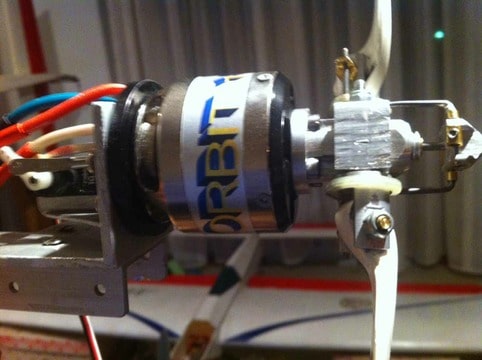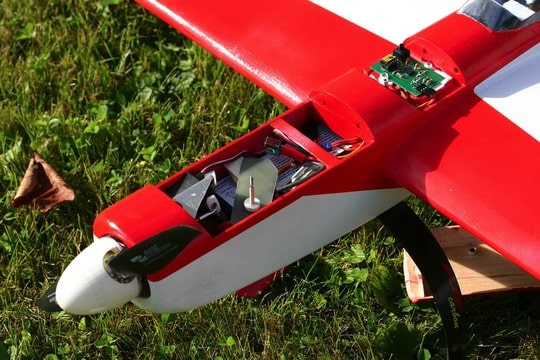There is a reason why the swept forward TE ships have less stick pressure. A few years back, Bill Werwage wrote about this in his Vulcan article in Model Aviation. Here's what he had to say...
Excerpt from Vulcan article:
“The most significant thing that was different about the Vulcan was the high amount of forward sweep in the trailing edge. This was done with two thoughts in mind. I wanted to keep the center of pressure (CP) from moving aft on the wing when the flaps were deployed. With the forward swept hinge line, the average flap position is ahead of the point where it would be on a straight hinge line model, and therefore when deployed the flaps would not move the CP as far aft. The effect this has is to not over stabilize the model by moving the CP too far back from the center of gravity. In other words the model would not become as nose heavy with the flaps deployed. One of the major benefits of this arrangement is that the stick pressure felt in the handle, especially in high wind conditions, is dramatically reduced. When the flaps are moved either up or down, the airfoil is changed to an undercamber type, which increases the wing’s lift. But it also changes the point of the center of the lift, which is also known as the center of pressure.
“On a straight trailing edge model, when the flaps are deployed, the CP moves a much greater distance, and over stabilization occurs. The result is more stick pressure and a model that requires more input to achieve directional change. In calm conditions this is almost unperceivable, but in heavy wind it can be dramatic!
“Another benefit of the forward sweep in the trailing edge hinge line is the effectively longer tail moment. The moment is now measured from the average of the flap’s position in relation to the stabilizer/elevator hinge line.”
There may even be more to all this. In a discussion I had with Dean Pappas about the Crossfire design he gave me some thoughts on the relative position of the quarter chord points on the root and tip airfoils. I asked him to write up his thoughts for inclusion in the book I'm writing about the Crossfire. Here's what he had to offer...
Dean's thoughts:
“First off, just to point out the happy hopelessness of this discussion, a stunt ship flying maneuvers on the surface of the hemisphere in steady runway wind is a horrifically complicated system to describe completely (Don’t even get me started about flying one of these in turbulence…).
“From an aerodynamic standpoint, wing sweep is measured along the quarter chord line. An un-swept, tapered wing has a trailing edge rake that is three times the leading edge rake angle. So, recognize that all stunt ships, including Bill’s and Bob’s, have swept wings. Airplanes with straight flap hinge lines actually have lots of sweep. If you take a swept wing and fly it yawed to incoming air (like a CL Stunt ship always does…) then a rolling moment will be produced. In the maneuvering area the airplane is always flying with the relative wind coming from the left side of the nose. The airplane is yawed to the right. Every time the airplane is G loaded in a maneuver the rolling tendency will ‘bang’ the outboard tip. Side note: If you’ve ever taken tip weight out to trim for a runway type wind, now you know why! This also explains why some of those older, constant chord designs, such as the Chief, fly much better than you’d expect in wind.
“The second thing that happens with a swept wing, especially if you have half-span flaps, or if you have full-span flaps that interfere with the wing tip vortices, is that the center of lift of the wing will move inboard and outboard with changes in flap deflection and G loading. On a swept wing this also means that the center of lift will also move fore and aft.
“If all you did was fly in heavy wind, you would still be stuck with a compromise between control system geometry and the undesirable effect of wing sweep. And, bad control system geometry and/or construction can trash all of this. Say what you will, but a straight flap hinge line is easier to construct properly. The Crossfire has .75 degree of sweep along the quarter chord line, including the flap. Compare that to what you are flying today.”
Thanks to Dean for that. I did check the sweep in the quarter chord line in several "average" stunt models and found it to be around 4.5 to 4.75 degrees of sweep. Compare that to the .75 degrees used in the Crossfire... I truly believe that this is a major factor in why ships with this feature turn easier (less stick pressure) in wind.
Later - Bob Hunt












